Embroidery digitizing is a skilled art form that plays a crucial role in transforming beautiful designs into intricate embroidered patterns. Whether you are an aspiring embroidery digitizer or looking to sharpen your existing skills, mastering the craft requires more than just technical proficiency.
This article presents five proven embroidery digitizer success tips that will help you succeed as an embroidery digitizer.

So, let’s delve into these key tips for embroidery digitizer and unlock the secrets to becoming a skilled and best embroidery digitizer.
Embroidery digitizers play a crucial role in transforming beautiful designs into stunning embroidered masterpieces.
But what exactly does an embroidery digitizer do?
Let’s find out!
Embroidery Digitizer Success Tips: 5 Proven Strategies
What Does an Embroidery Digitizer Do?
A skilled embroidery digitizer takes a design, whether it’s a logo, artwork, or a custom creation, and converts it into a digital file that an embroidery machine can read.
They translate the intricate details, colors, and shading of a design into stitch commands, ensuring that the final embroidered piece looks as close to the original as possible.
Key Skills and Knowledge Required
The first embroidery digitizer success tip is you need to have a strong understanding of both design principles and technical aspects. You should be well-versed in various embroidery techniques, and color theory, and have a keen eye for detail.
Additionally, a good knowledge of embroidery machines and software is essential to bring designs to life.
Importance of Accuracy and Attention to Detail
Attention to detail is paramount in quality embroidery digitizing. A small mistake in a digitized design can lead to a significant flaw in the final embroidered piece. Accuracy in recreating colors, shapes, and textures is crucial to ensure the design’s integrity.
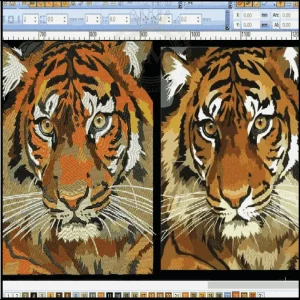
Mastering the Art of Design Conversion
Converting design files into embroidery formats is an art in itself. Let’s explore some embroidery digitizer success tips to help you excel in this aspect of embroidery digitizing.
Converting Design Files to Embroidery Formats
Mastering the conversion process involves selecting the appropriate file format for embroidering. Understanding the capabilities and limitations of different embroidery software and machines will help you make informed choices.

Experimenting with different formats and running test stitches can ensure that the final result matches your vision.
Dealing with Complex Designs and Color Variations
Complex designs and intricate color variations can pose challenges in digitizing. Breaking down the design into manageable sections and paying careful attention to color changes can make the process smoother.
Experimenting with different stitch types and densities can help achieve the desired texture and appearance.
Optimizing Design Size and Placement
Size and placement are crucial factors to consider when digitizing a design. Ensuring that the design fits appropriately within the desired embroidery area and complements the garment or fabric is essential.
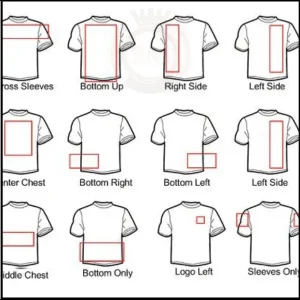
Experimenting with different sizes and orientations can help optimize the design’s visual impact and prevent distortion during the stitching process.
Utilizing the Right Tools and Software
Equipping yourself with the right tools and software can significantly enhance your embroidery digitizing skills. Let’s dive into some embroidery digitizer success tips.
Essential Embroidery Digitizing Software
Investing in high-quality embroidery digitizing software is a game-changer. Look for software that offers a comprehensive range of design editing tools, accurate stitch simulation, and compatibility with different embroidery machine formats.
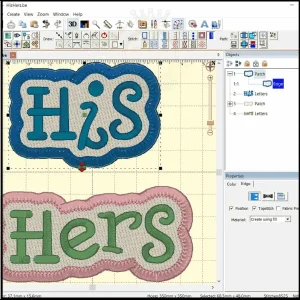
Popular software options include Wilcom, Embird, and Hatch Embroidery.
Understanding and Utilizing Different Tools
Within your chosen software, it’s crucial to familiarize yourself with the various digitizing tools available. These tools will allow you to create and manipulate shapes, adjust stitch settings, and fine-tune details.
Take the time to experiment and master these tools to unlock your digitizing potential.
Exploring Advanced Features and Plugins
Embroidery digitizing software often comes with advanced features and plugins that can streamline your workflow and open up new possibilities.

Explore options like auto-digitizing, lettering features, and special effects to add that extra flair to your designs. Don’t shy away from trying new tools and techniques to expand your creative horizons.
Perfecting the Digitizing Process
To achieve embroidery digitizing success, mastering the digitizing process itself is key. Follow these embroidery digitizer success tips to perfect your craft.
Understanding the Anatomy of a Digitized Design
A digitized design consists of various components, such as underlay stitches, fill stitches and satin stitches. Understanding the purpose and characteristics of each component will help you create designs that stitch out flawlessly.
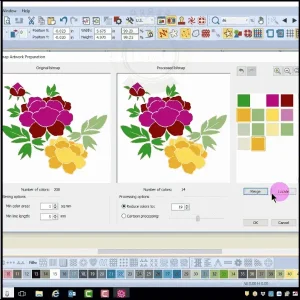
Learning about stitch types, densities, and underlay techniques will empower you to make informed decisions during the digitizing process.
Efficient Workflow and Organization Techniques
Establishing an efficient workflow is essential to maximize your productivity as an embroidery digitizer.
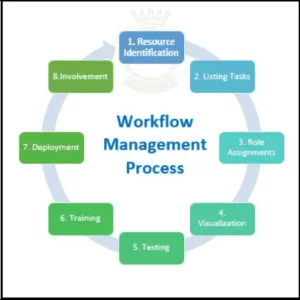
Organize your design files logically, create templates for reoccurring elements, and establish a systematic approach to digitizing. Developing a consistent workflow will save you time and reduce the chances of errors.
Embroidery Digitizer Success Tips for Proper Stitching Order and Density
Determining the correct stitching density and order is crucial for achieving high-quality embroidery digitizing results. Start by considering the order in which elements should be stitched to ensure smooth transitions and avoid unnecessary jump stitches.
Experiment with different stitch densities to achieve the desired level of coverage while maintaining the integrity of the design.
Enhancing Productivity and Efficiency
Enhancing productivity and efficiency is crucial in today’s fast-paced world, where time is often a limited resource.
Time Management Strategies for Digitizers
As an embroidery digitizer, time is your most valuable asset. To make the most of it, implement some simple time management strategies. Prioritize your tasks and create a schedule that allows for focused work.
Avoid multitasking, as it can lead to errors and wasted time. Break large projects into smaller, manageable tasks, and set realistic deadlines for each. Remember to take regular breaks to recharge your creativity and prevent burnout.
Utilizing Templates and Standardization
Templates and standardization are your secret weapons for efficiency. Create and save templates of commonly used designs or elements to reduce the time spent recreating them from scratch.

Establish consistent guidelines and processes for digitizing different types of designs, so you don’t have to reinvent the wheel every time. This will speed up your workflow and ensure a consistent end product.
Automating Repetitive Tasks
Nobody likes doing the same thing over and over again, especially digitizers. Look for opportunities to automate repetitive tasks using embroidery software.
Batch processing, automatic color conversions, and auto-digitizing tools can save you precious time and effort.
Experiment with different features of your software to find the automation solutions that work best for you. Just remember to review the results carefully to maintain quality control.
Developing Effective Communication with Clients
Developing effective communication with clients is fundamental to building strong, enduring relationships that drive business success.
Understanding Client Requirements and Expectations
To deliver exceptional digitized designs, you must understand your client’s requirements and expectations. Take the time to discuss projects with clients and ask detailed questions to clarify their vision.

Pay attention to their preferences regarding stitch types, colors, and fabric compatibility. The better you understand their needs, the higher the chances of exceeding their expectations.
Establishing Clear and Consistent Communication Channels
Communication is key to any successful business relationship. Establish clear and consistent communication channels with your clients. Whether it’s through email, phone calls, or a project management tool, make sure everyone is on the same page.
Respond to client inquiries promptly and provide regular updates on the progress of their projects. Clear communication builds trust and fosters long-term client relationships.
Navigating Client Feedback and Revisions
Client feedback and revisions are part of the digitizing process. Embrace them as opportunities to improve your work. When receiving feedback, listen attentively and ask for clarification if needed.

Don’t take it personally; instead, use it as a chance to refine your designs. Be open to revisions and demonstrate your commitment to delivering the best possible end result. A positive and collaborative approach to feedback will impress your clients.
Maintaining Quality Control and Troubleshooting
Maintaining quality control and troubleshooting are critical components in ensuring the delivery of products and services that meet or exceed customer expectations.
Ensuring Design Accuracy and Integrity
Quality control is crucial to the success of your embroidery digitizing. Always double-check your designs for accuracy and integrity before sending them to clients. Pay attention to details like stitch count, alignment, and smooth transitions.
Test the design on different fabrics and machines to ensure compatibility and optimal results. By delivering high-quality digitized designs, you’ll establish a reputation for excellence.
Identifying and Addressing Common Digitizing Issues
Even the most experienced digitizers encounter common issues from time to time. Stay vigilant and be proactive in identifying and addressing these issues. Thread breaks, distorted shapes, and poorly digitized text are just a few examples.
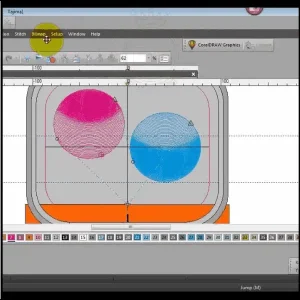
Research and learn from other digitizers’ experiences, and seek solutions to overcome these challenges. Troubleshooting skills are essential for maintaining quality and delivering flawless designs.
Conducting Quality Assurance Checks
To ensure consistent quality, conduct regular quality assurance checks throughout the digitizing process. Review each design meticulously, paying attention to details like thread colors, density, and underlay stitching.
Compare the final output to the client’s requirements to ensure alignment. Don’t be afraid to make adjustments and retest the design until it meets your high standards. A thorough quality assurance process guarantees client satisfaction.
Conclusion
Remember, embroidery digitizing is both an art and a skill. Embrace these embroidery digitizer success tips, adapt them to your workflow, and enjoy the journey of becoming a successful embroidery digitizer. Your passion and dedication will shine through in every stitch.
Happy digitizing!
EMdigitizing: Embroidery Digitizing Expert At Your Service
If you are interested in any kind of embroidery project, then EMdigitizing is the best option for you. We offer embroidery digitizing and vector art services with a fast turnaround time. You can also visit and check our website as well as our best services.
We also offer a great 50% discount on all our services for our respected first-time clients. We also offer free quotes generated in just 5 minutes.
You should grab this limited-time offer and take your embroidery project to the next level with EMdigitizing.
If you’ve any queries regarding this topic, you can ask them. Thank you for taking the time to read this article.
Frequently Asked Questions:
To start digitizing embroidery, you’ll need to learn the basics of embroidery software, understand different stitch types, and practice converting images into stitch files. Begin with free or trial versions of digitizing software and follow online tutorials or take classes to build your skills.
Becoming a professional digitizer requires mastering embroidery digitizing software, understanding fabric types and appropriate stitches, and gaining experience through practice and feedback. Consider obtaining certification from reputable organizations and continuously learning new techniques and trends in the industry.
The income of digitizers can vary widely based on experience, location, and the industry they work in. On average, embroidery digitizers may earn anywhere from $30,000 to $60,000 per year, with experienced professionals possibly earning more.
Learning to digitize embroidery can be challenging due to the complexity of software and the need to understand how stitches behave on different fabrics. However, with dedication, practice, and the right resources, most people can acquire the skills needed to create high-quality embroidery designs.
